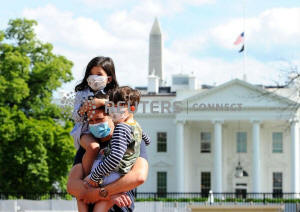As U.S. schools reopen, concerns grow that kids spread coronavirus
 Send a link to a friend
Send a link to a friend
 [August 20, 2020]
By Deena Beasley [August 20, 2020]
By Deena Beasley
(Reuters) - U.S. students are returning to
school in person and online in the middle of a pandemic, and the stakes
for educators and families are rising in the face of emerging research
that shows children could be a risk for spreading the new coronavirus.
Several large studies have shown that the vast majority of children who
contract COVID-19, the disease caused by the virus, have milder illness
than adults. And early reports did not find strong evidence of children
as major contributors to the deadly virus that has killed more than
780,000 people globally.
But more recent studies are starting to show how contagious infected
children, even those with no symptoms, might be.
"Contrary to what we believed, based on the epidemiological data, kids
are not spared from this pandemic," said Dr. Alessio Fasano, director of
the Mucosal Immunology and Biology Research Center at Massachusetts
General Hospital and author of a new study.
Schools across the country are trying out a wide range of strategies to
reopen, from all online classes to all in person. They are asking
whether reopening schools with stringent mitigation measures is worth
the risk to students, families and educators, given that keeping schools
closed will likely harm academic progress, social and emotional
development, mental health and food security.

Dr. Fasano and colleagues at Boston's Massachusetts General and
MassGeneral Hospital for Children found that infected children have a
significantly higher level of virus in their airways than adults
hospitalized in intensive care units for COVID-19 treatment. The high
viral levels were found in infants through young adults, although most
of the participants were age 11 to 17.
The study, published on Thursday in the Journal of Pediatrics, involved
192 participants ages 0-22 who were seen at urgent care clinics for
suspected COVID-19. Forty-nine of them - a quarter of the total - tested
positive for the virus. Another 18 were included in the study after
being diagnosed with multisystem inflammatory syndrome, a serious COVID-related
illness than can develop several weeks after an infection.
The research suggests that children can carry a high viral load, meaning
they can be very contagious, regardless of their susceptibility to
developing a COVID-19 illness.
"There has been some conflicting data out there about the degree to
which children can be contagious," said Dr. Marybeth Sexton, assistant
professor of infectious diseases at Emory University School of Medicine
in Atlanta, who was not involved in the study. "This is further evidence
that we may see children as sources of infection."
She added more extensive research is needed.
[to top of second column]
|

Jason Aguirre carries his children, Elle, 4, and Shai, 6, after
viewing the White House, where flags fly at half-staff to
commemorate the victims of the coronavirus disease (COVID-19), in
Washington, U.S., May 23, 2020. REUTERS/Mary F. Calvert

"NOBODY IS SPARED"
A separate study published last month in JAMA Pediatrics found that
older children hospitalized with COVID-19 had similar levels of the
virus in their upper respiratory tract as adults, but children
younger than five carried significantly greater amounts.
However, other medical groups show differing information over
children's potential to spread the virus. The American Academy of
Pediatrics on Wednesday updated its guidelines to reflect "that
children under 10 years may be less likely to become infected and
spread infection, while those 10 years and older may spread it as
efficiently as adults."
A recent South Korean study found that people were most likely to
contract the new coronavirus from members of their own households,
with children aged nine and under least likely to be the first
identified case.
Since most children infected with the coronavirus have very mild
symptoms, they were largely overlooked as a demographic in the
earlier stages of the pandemic, Dr. Fasano said.
The U.S. Centers for Disease Control and Prevention reported a
pediatric COVID-19 hospitalization rate of 8 per 100,000 for March 1
to July 25, compared with a rate of 164.5 per 100,000 for adults.
Experts say the incidence of a related issue, which can develop
after COVID-19 infection, multisystem inflammatory syndrome, is
concerning. "The number of these patients is growing," Dr. Fasano
added.
Concerns have also been raised about cases of type 1 diabetes among
children diagnosed with COVID-19. A small UK study found that the
rate of diabetes almost doubled during the peak of Britainís
COVID-19 epidemic, suggesting a possible link between the two
diseases that needs more investigation.

"The more we understand, the more it boils down to nobody is spared
in this pandemic," Dr. Fasano said.
(Reporting By Deena Beasley; Editing by Peter Henderson and Aurora
Ellis)
[© 2020 Thomson Reuters. All rights
reserved.] Copyright 2020 Reuters. All rights reserved. This material may not be published,
broadcast, rewritten or redistributed.
Thompson Reuters is solely responsible for this content. |